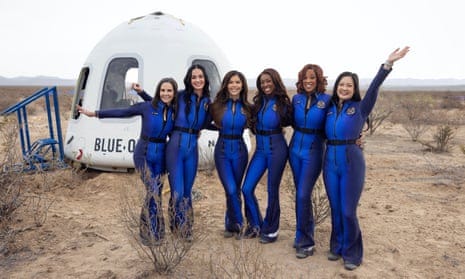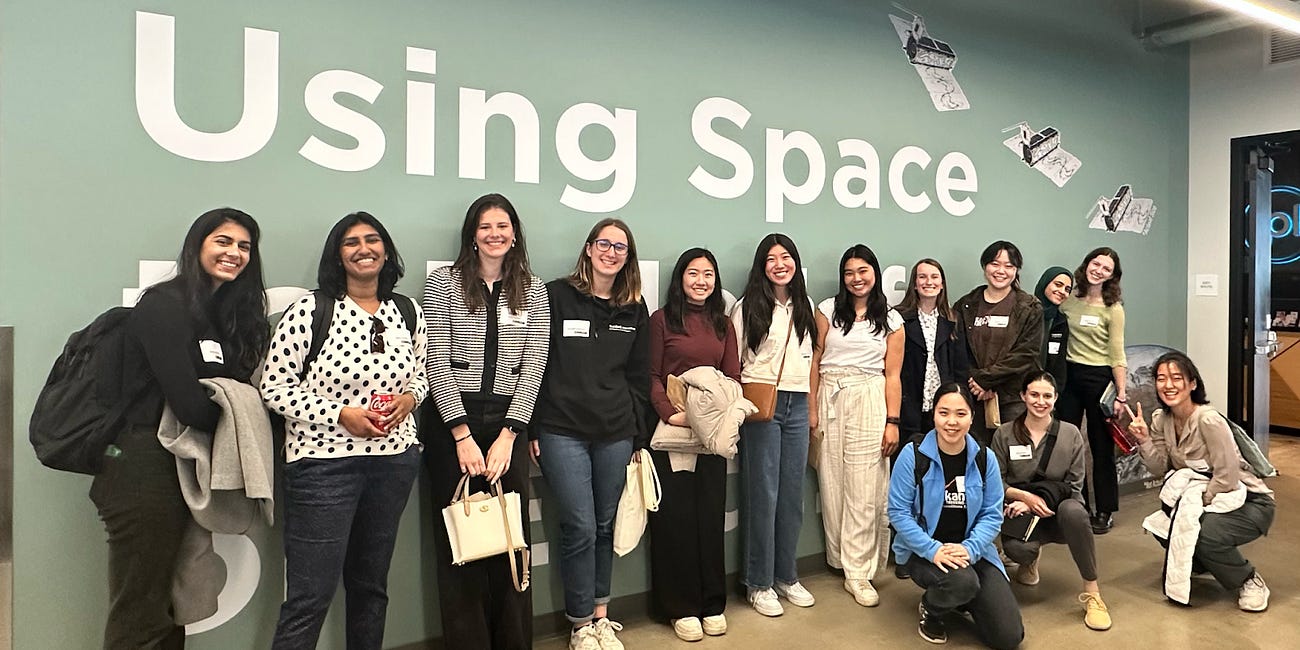The Overview — Diversity
Fueling the next generation of aerospace engineers
Diversity
The practice of including people from a range of social and ethnic backgrounds, genders, and identities
Welcome back to The Overview! This week’s edition is all about diversity and how inclusion strengthens the future of aerospace. Let’s dive in!
👩🏽🚀 What would it take for everyone to feel like they belong in aerospace? Join Stanford PhD student Michelle Ho as she reflects on belonging, bias, and building a more inclusive future in aerospace ✨
🚀 In aerospace news, Blue Origin and SpaceX are expanding access to space, not just for trained astronauts but for civilians and new faces from all walks of life! 🌎
👥 Personal Experiences
Aerospace engineering is rapidly bringing science fiction to life — from autonomous spacecraft to robotic missions on the Moon and Mars. While the field continues to push the boundaries of science and technology, women and gender minorities remain underrepresented in many of its core areas. Building an inclusive future means making sure everyone has the support, visibility, and community they need to thrive.
In this article, join Stanford PhD student Michelle Ho as she reflects on:
Her journey to pursuing an aerospace engineering PhD 🚀
The isolation and subtle biases women often face in technical spaces🧍♀️
Advice for women navigating male-dominated STEM spaces 💡
Actions male allies can take to support inclusion 🧑🤝🧑
How educators and industry leaders can create lasting structural change 🏛️
We want to spotlight the responsibility of shaping a more inclusive future in aerospace. Whether you're a student, ally, or professional, this piece offers something for you! Read the full article below:
🚀 Aerospace News
One of the most exciting things in the aerospace industry today is that the ability to fly to space (orbital or sub-orbital) is rapidly opening up. In the past, this was limited to career astronauts (or the occasional rich space enthusiast) who received intense decade-long training to fly to destinations like the International Space Station.
But things are changing. This week, let us look at two private spaceflight missions that show that space is no longer just for trained astronauts, but for civilians who may visit space for scientific or leisure purposes! Although the cost barrier is still high, an increasing cadence points towards these opportunities opening up for more people.
SpaceX Fram2 Mission
On March 31st, 2025, SpaceX launched the Fram2 mission, with four crew members on board a Crew Dragon launched atop a Falcon 9 rocket. This mission was undertaken by entrepreneur Chun Wang, who has a personal interest in the exploration of Earth’s polar regions. So, he devised the Fram2 mission (named after Fram, a ship used for early human exploration of the poles), as the first human spaceflight mission to operate in polar orbit, i.e., the first opportunity for humans to see Earth’s poles with their own eyes. The crew was an all-civilian international crew who shared Wang’s interest in polar exploration. As with the SpaceX Inspiration4 mission in 2021, this Crew Dragon was equipped with a cupola that allowed the crew to look out of the capsule. Apart from the sightseeing, the crew also conducted scientific experiments during their 3 and a half days in orbit.

Blue Origin NS-31 Mission
On the morning of April 14th, Blue Origin launched its NS-31 (NS stands for New Shepard, the rocket used for the launch) mission carrying six passengers to the edge of space. This mission is notable due to its high-profile passengers, including international pop star Katy Perry and TV journalist Gayle King. The all-women crew flew past the Karman line for the 11-minute mission, experiencing four minutes of weightlessness with unobstructed views of the Earth and the Moon. Although primarily designed as a tourism experience rather than a scientific mission, the mission showcased the increasing access of spaceflight to civilians with minimal training (with only two days of in-person training required), on a completely reusable rocket!

💬 Quote of the Week
“What everyone in the astronaut corps shares in common is not gender or ethnic background, but motivations, perseverance, and desire — the desire to participate in a voyage of discovery.”
— Dr. Ellen Ochoa, engineer and NASA astronaut
Thanks for joining us for The Overview — The Diversity Edition. No matter your gender, age, race, or any other identity, your seat on the rocketship matters. And when you lift off, bring others along for the ride! 🚀
If you enjoyed this edition, share The Overview with a friend or colleague who’s passionate about making aerospace an inclusive and welcoming community. Got any thoughts, questions, or topic requests? We’d love to hear from you — feel free to reach out at admin@theoverview.org!
Stellar vibes,
Michelle, Tagg, Anshuk, Maggie, Isaac



